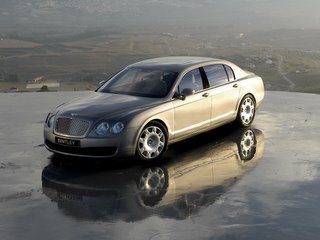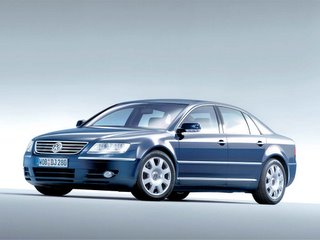
This month, U.S. automobile monthly Car & Driver published a review written by their well respected editor Csaba Csere. The article, “Bentley Continental Flying Spur: It’s all about being special,” is in large part a positive review of Bentley’s latest four door saloon.
In his road test review, Mr. Csere posed the question that since the large automaker Volkswagen, AG had purchased the small, but élite Bentley Motors and had developed two new models since the 1999 acquisition, would Bentleys still be considered special?
The Car & Driver editor then spent much of the rest of his word allotment to proclaim how wondrous it was to experience a 5,580 pound car performing as quickly as the Flying Spur flew. Mr. Csere concluded that were he able to pay the $171,285 for a new Flying Spur, he would consider the new Bentley special enough to merit the cost.
I think that Mr. Csere and his colleagues at Car & Driver have missed the point.
What Mr. Csere does not seem to appreciate is how Bentley has managed to move down market with the new Flying Spur. True, the car is fleet; the new Bentley manages to soar to sixty mph in 4.6 seconds and on to one hundred and sixty in half a minute.
But being fast by itself does not bestow the true values of Bentley Motors. If owning the ability to comfortably drive at intense velocities were the only aim, one need look no further than spending $40,000 less on the Mercedes-Benz S600, the more capable machine.
The new Fl
 ying Spur is based, like the Continental GT, on the ill fated Volkswagen Phaeton. In the Phaeton’s case, not only was the prospect of spending $96,600 on a VW absurd, it was not marketable considering that the virtues of Audi A8 ownership could be enjoyed for $30,000 less.
ying Spur is based, like the Continental GT, on the ill fated Volkswagen Phaeton. In the Phaeton’s case, not only was the prospect of spending $96,600 on a VW absurd, it was not marketable considering that the virtues of Audi A8 ownership could be enjoyed for $30,000 less.So, in a GM style maneuver, VW recycled the Phaeton – its body frame and W12 engine into the two new Bentleys. The move has achieved success with the popular Continental GT and will likely do the same with Flying Spur.

The interior of the Flying Spur is nearly the same as the VW; from the very shape of the doors, to the shape of the seats and arm rests, and even the seat belts. Mr. Csere seems to note some of the VW essence by referring to the “unfortunate ‘German disease’ of overly complex and nonintuitive controls,” in the sedan.
If Bentley used to be nothing more than a redressed Rolls-Royce, would that not be better than being just a redressed Volkswagen?
Building a German Bentley based on a Volkswagen is a sure sign of the devaluation of a marque. Consider the fall of Mercedes-Benz since the Daimler-Benz acquisition of Chrysler. To be sure, Chrysler has benefited by since producing the best made American cars. Mercedes-Benz has since bottomed out in luxury segment quality surveys by J.D. Power & Associates and yours truly.
What saves Bentley is that the company continues to produce the sublime Arnage for the time being. This is a bone thrown to the Conservatives that serves to satisfy and an attack on the more flamboyant competition (i.e. the Phantom). What is regrettable is that in a vacuum, the Flying Spur would be a fine car in the league of the Mercedes-Benz S-Class. Yet, since it must compare to the grand Arnage, it fails to impress.
Without the Arnage in Bentley's lineup, owning a contemporary Bentley would not be so special; no matter how many heavy footed automotive reporters say otherwise.

No comments:
Post a Comment